MR Safety
Traditional Poster
MR Safety
Monday, 18 June 2018
| Exhibition Hall 1451-1475 |
13:45 - 15:45 |
|
1451.
 |
Assessment of Peripheral Nerve Stimulation due to MR gradient induced Electric Field around Implantable Device
Xiyao Xin, Xi Lin Chen, Xin Huang, Shiloh Sison
Time varying magnetic gradient fields can induce electric field (E-field) in the human body and may cause peripheral nerve stimulation (PNS) during MR scan. As metallic implant may cause local E-field enhancement, there is speculation that it may increase risk of PNS. In this study, gradient coil modeling is used to investigate induced E-fields around implantable devices. The maximum E-field in the proximity of implants is compared to the whole body maximum E-field of the human body without implant. The result shows that the local enhanced E-field near implants does not exceed the whole body maximum E-field in human body.
|
|
1452.
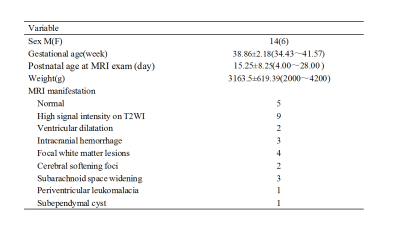 |
Impacts of 3.0 Tesla magnetic resonance imaging noise on hearing function in neonates with hearing protection
Huifang Zhao, Chao Jin, Xinyu Li, Heng Liu, Xiaoyu Wang, Xingxing Tao, Yannan Cheng, Jian Yang
Loud acoustic noise generated from magnetic resonance (MR) imaging remains the great concern for neonatal exams. This study therefore aims to clarify whether this noise would cause the hearing loss to neonates who underwent MRI exam by auditory brainstem response (ABR). Results indicated that there was no significant difference in all the six ABR indices (waves I, III, V amplitudes and wave I-III, III-V, I-V intervals) between before and after the MRI examinations. Our findings may suggest the rarely temporary impact of MRI noise on ABR in neonates who underwent a 3.0T MRI.
|
 |
1453.
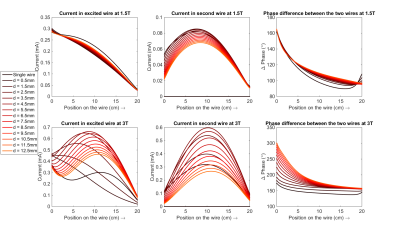 |
The transfer function for implanted wires when a second wire is near.
Peter Stijnman, Janot Tokaya, Cornelis van den Berg, Alexander Raaijmakers
Lead wires of medical implants can pose a severe safety risk due to RF-induced heating. Risk assessment typically involves determination of the transfer function. This study shows that the transfer function may drastically change if a second wire is located close to the lead wire. An explorative simulation study has been performed investigating the impact of inter-wire spacing and wire length on the alteration of the transfer function by the second wire. Results reveal that in particular insulated wires may show very strong enhancements (>100%) in induced currents if a second wire is present.
|
|
1454.
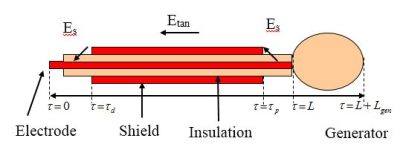 |
Analysis and Design of Lead Wires with Metallic Shielding for Reduction of RF Heating during MRI for Active Implants
Krishna Singhal, John Nyenhuis
The purpose of this work is to provide a quantitative understanding of how a conducting metallic shield over a lead will reduce RF heating at the electrode during MRI scans. A physical model and equations for reduction of RF heating by a shielded lead are presented. Temperature rise were calculated for different lengths of shielded and unshielded leads. Confirming measurements were made for a quarter wavelength coaxial cable model of the lead. Measured temperature rise and transfer function depended on terminations conditions, with the open lead exhibiting a temperature rise approximately 10 times greater than the shorted lead.
|
|
1455.
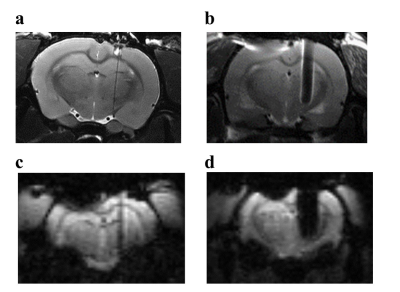 |
MRI compatible neural electrodes for simultaneous deep brain stimulation and fMRI mapping
Siyuan Zhao, Gen Li, Wenjing Chen, Zhifeng Liang, Xiaojie Duan
Functional magnetic resonance imaging (fMRI) under deep brain stimulation (DBS) provides important insights into understanding the connection of the neural networks. However, such research has been limited by incompatibility of common electrode in the MR environment. To address such issue, we fabricated a novel graphene based neural microelectrode, which exhibited excellent charge storage capacity and MRI compatibility. Using such microelectrode, we successfully demonstrate deep brain stimulation of subthalamic nucleus (STN) evoked robust BOLD activation in cortex and basal ganglia nucleus of the Parkinsonian rats with minimal image artifact. Therefore, MR-compatible graphene microelectrode could provide unique opportunity for simultaneous DBS-fMRI studies.
|
|
1456.
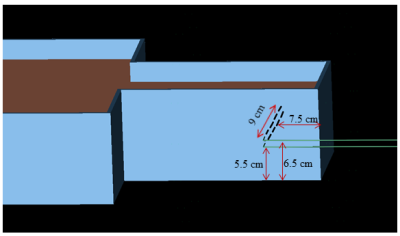 |
RF-induced heating of a conducting wire entering into a dielectric medium along right-left axis on the presence of another wire during MRI
Pallab Bhattacharyya, Tanvir Baig, Bhumi Bhusal, Mark Lowe, Michael Martens, Stephen Jones
RF-induced heating of stereo encephalography (SEEG) electrodes during MRI scans could be of concern. The change in heating pattern of an electrode in the presence of another electrode was investigated by measuring the heating at the tip of a conducting and insulated (bare at tip) wire parallel to B0-field and entering a poly-acrylic gel phantom along left-right axis in the presence of another wire. While the resonance length for maximum heating of the wires did not depend on the number of wires, the temperature rise at the wire tips depended on the relative lengths (resonance / anti-resonance) of the wires.
|
|
1457.
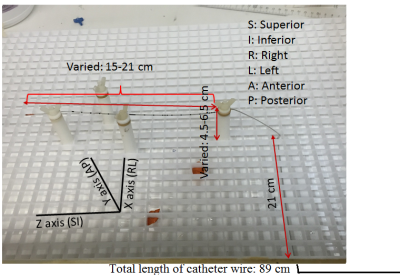 |
Safety of MRI scans of partially implanted entirely insulated conducting wire with spine matrix coil at 3T
Pallab Bhattacharyya, Bhumi Bhusal, Anna Crawford, Thomas Masaryk, Mark Lowe
RF-induced heating of an entirely insulated partially implanted conducting wire in a gel phantom was measured at two different 3 tesla systems with a receive-only spine matrix coil. Presence of inner spiral-wound stainless steel helix in Arrow AK-05502 intrathecal catheters raises concern about possible RF-induced heating during MRI. Temperature of the catheter was measured by using fiber optic sensors with fluoroptic monitoring with the catheter inserted into an ASTM gel phantom. Different configurations representing in vivo settings were tested at different E-fields in the phantom. No significant heating was observed in any of the configurations.
|
|
1458.
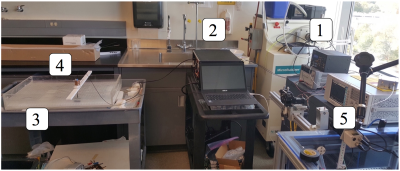 |
Transmit Coil impedance measurements to estimate radiofrequency induced currents on wires in MRI
Brandon Coles, Kevan Anderson, Greig Scott, Christopher Ellenor, Graham Wright
MRI introduces a safety risk when performing imaged guided interventions caused by induced currents on interventional devices that potentially lead to dangerous temperature increases near their tip. This safety issue can be reduced using parallel RF transmission approaches, although it is difficult to ensure safety when device motion is involved. In this work, impedance changes of a transmit coil are used to estimate the coil’s induced current on a device, and this is extended to a two coil array to determine individual transmit signals needed to reduce the total induced current on a device with simple device geometry.
|
|
1459.
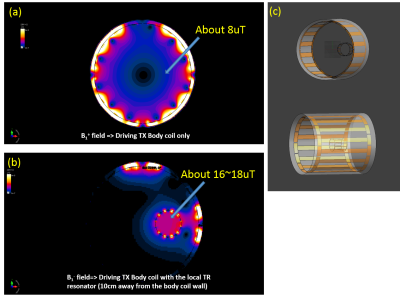 |
The feasibility study about the protection circuit for unplugged local transceiver coil in MRI bore
Seunghoon Ha, Adam Morris, Jay Berres, Jonathan Nass
The local transceiver coil such as a birdcage coil has still been equipped for local extremity or brain MRI in clinical study. By accident, the local transceiver coil is disconnected from an MRI system and inadvertently leaves linked to strong MRI RF fields during imaging procedures using other RF coils. It makes the local transceiver coil damaged such as components burnt as well as worse plastic housing melt and even causes patients’ skin to burn during clinical scanning. To prevent from these damages, we propose a new protection circuit to prevent the unplugged local transceiver coil in MR bore from RF power radiated by the whole body transmitter coil.
|
|
1460.
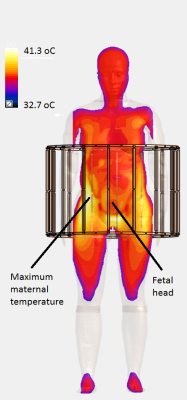 |
The effect of fetal dielectric properties, position and blood-flow in maternal tissues on fetal temperature for fetal MRI at 3T
Shaihan Malik, Jeffrey Hand, Joseph Hajnal
Effects of age adjusted dielectric properties for fetal tissues compared to adult values, fetal position, and blood-flow in maternal tissues on fetal temperature in a model of a 7 month pregnant woman within a 3T birdcage coil were investigated numerically. Age adjusted properties resulted in small increases in peak and mean fetal temperatures and reduced time to reach a peak fetal temperature of 39°C. Changes in fetal position produced a greater effect on peak and mean fetal temperatures. Temperature dependent blood-flow in maternal superficial tissues had little effect on fetal temperature.
|
|
1461.
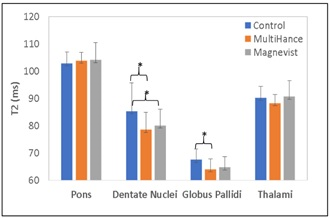 |
T2 Relaxation in Evaluating Gd deposition: comparison between MultiHance and Magnevist
Ning HUA, Pedro Staziaki, Mohamad Assayuri, Vanesa Carlota Andreu Arasa, Hernan Jara, Osamu Sakai
Purpose: To evaluation quantitative T2 mapping in exploring the effects of prior Gd exposure. Methods: Dual-echo MRI was performed in three groups of subjects; 1) without prior Gd exposure history, 2) only with prior exposure to MultiHance®, and 3) only with prior exposure to Magnevist®. T2 relaxation times were measured in pons, dentate nuclei, globus pallidi and thalami. Results: T2 relaxation time decrease was observed for both contrast agents in dentate nuclei and globus pallidi. Conclusion: Quantitative T2 mapping is a valuable tool in the investigation of Gd deposition in the brain.
|
|
1462.
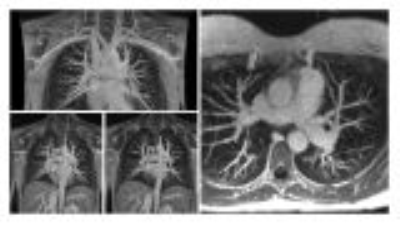 |
Preliminary Experience in Off-Label Use of Ferumoxytol Contrast-enhanced Magnetic Resonance Angiography in Pregnancy
Lindsay Griffin, Kim-Lien Nguyen, Thomas Grist, Christopher Francois, Scott Reeder, J Finn, Mark Schiebler
Recent debate about potential long-term safety of gadolinium-based contrast agents has amplified concerns about their use in pregnancy, greatly limiting options for advanced imaging in this critical patient group. We report our experience on the use of ferumoxytol contrast-enhanced magnetic resonance angiography (MRA) during pregnancy. We identified eight pregnant subjects, at two institutions, with contrast-enhanced MRI/MRA using ferumoxytol. There was one mild possible adverse event during contrast administration. There were no premature deliveries (< 35 weeks) or birth defects in five babies with available postpartum data. While preliminary, ferumoxytol holds promise as a versatile MR contrast agent in pregnancy.
|
|
1463.
|
CONSENSUS STATEMENT ON THE USE OF GADOLINIUM FOR MAGNETIC RESONANCE IMAGING USED IN THE DIAGNOSIS AND FOLLOW-UP OF PATIENTS WITH MULTIPLE SCLEROSIS
Jillian Chan, Anthony Traboulsee, Emanuel Kanal, Kenneth Maravilla, Lori Saslow, Laura Barlow, Bruce Cohen, Kathleen Costello, June Halper, Colleen Harris, David Jones, Flavia Nelson, Scott Newsome, Jiwon Oh, Daniel Pelletier, Kottil Rammonhan, Daniel Reich, Alex Rovira, Lael Stone, Kevin Terashima, Jerry Wolinsky, David Li
Clinical guidelines for the diagnosis and follow-up of multiple sclerosis recommends brain MR imaging with gadolinium based contrast agents. Our aim was to address concerns about the use of gadolinium, the risk of accumulation in the brain and propose changes to clinical guidelines published in 2016. Group consensus is that GBCA remain essential in the diagnostic evaluation of a patient suspected of having MS to demonstrate active inflammatory lesions. GBCA should be used judiciously, minimizing gadolinium exposure and dose when possible.
|
|
1464.
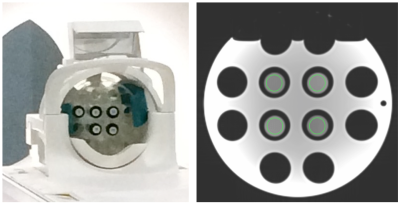 |
The impact of altering MRI equipment and scanning parameters on phantom signal intensity ratio measurements – possible implications for interpreting Gadolinium signal changes within the brain
Laura Young, Shona Matthew, Stephen Gandy, Lukasz Priba, John Graeme Houston
Signal hyper-intensities within brain regions have been attributed to the deposition of gadolinium following repeat administrations of MR contrast agents. These have been mainly investigated retrospectively, but acquisition parameters may have varied. We investigated the impact of altering imaging parameters when measuring phantom signal intensity ratios (SIR). By changing parameters from a baseline, it was established that the application of filters, number of coil receiver channels, and changes to TR and TE resulted in percentage signal fluctuations of similar magnitude to hyper-intensities. It is recommended that imaging parameters are standardised where possible when interpreting SIR data in longitudinal brain studies.
|
|
1465.
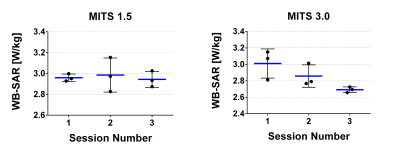 |
Estimated Measurement Uncertainty (EMU) in Calorimetrically-Determined Whole Body SAR Values for Medical Device Evaluation Using Benchtop Radiofrequency Exposure Systems
Krzysztof Wawrzyn, Jack Hendriks, William Handler, Blaine Chronik
The in vitro assessment of true radiofrequency whole body averaged specific absorption rate (WB-SAR) is described in the technical specification standard of ASTM F2182-11a, by direct measure of RF-induced heating within a standardized phantom centered inside the RF birdcage coil. F2182-11a does not address uncertainty assessment of the heating experiment. In this study, we present our measured values for short-term measurement repeatability and long-term measurement reproducibility. These measurements support the conclusion that RF-induced WB-SAR measurements made with bench-top RF exposure systems can be made with a total estimated measurement uncertainty of approximately 7% (k=1).
|
|
1466.
 |
Impact of tissue image segmentation errors on SAR
Asha Singanamalli, Matthew Tarasek, Qin Liu, Desmond Yeo, Thomas Foo
In this study, we evaluate the sensitivity of peak and global SAR to false positive (FP) and false negative (FN) errors in segmentation for three major brain tissue types: Gray Matter (GM), White Matter (WM) and Cerebrospinal Fluid (CSF). Voxel probability maps of GM, WM and CSF are thresholded at various intervals to generate multiple anatomical head models from a simulated T1w MRI dataset. FP and FN errors in segmentation are evaluated for each anatomical model with respect to the ground truth. Electromagnetic simulations are performed to relate these errors to peak and global SAR values at 3T.
|
|
1467.
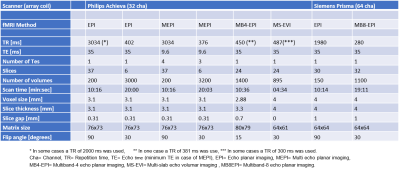 |
Safety and EEG Data Quality of Concurrent High-Density EEG and High-Speed fMRI at 3 Tesla
Mette Foged, Ulrich Lindberg, Kishore Vakamudi, Henrik Larsson, Lars Pinborg, Troels Kjćr, Martin Fabricius, Claus Svarer, Brice Ozenne, Carsten Thomsen, Sándor Beniczky, Olaf Paulson, Stefan Posse
Using concurrent high-density EEG and different high-speed fMRI methods, we investigate safety of RF heating, effect on image SNR and assess EEG data quality. RF related electrode heating during a 30-minute scan did not exceed 1.0o C with any of the pulse sequences. No significant differences in the EEG data quality were found between high-speed fMRI and conventional EPI (p=0.78). Residual ballistocardiographic artifacts resulted in 58% of EEG data being rated as poor quality. This study demonstrates that high-density EEG can be safely implemented in conjunction with high-speed fMRI and that high-speed fMRI does not adversely affect EEG data quality.
|
|
1468.
 |
Active Implantable Medical Device – Can its Radio Frequency Radiation be a Potential Source of MR Image Artifact?
Xi Lin Chen, Perry Li, Shiloh Sison
To assess if an active implantable medical device (AIMD) may unintentionally generate radio frequency signals near the receiver band of an MRI RF coil and cause image artifact, a method is proposed in this study to quantify the maximum AIMD radiated signal strength near the MR Lamor frequencies at 1.5T and 3T. Three commercially available AIMDs were investigated and the maximum radiated signal level was found to be around -120 dBm at the 64 and 128 MHz range. Such information can be utilized in conjunction with MR RF receiver specifications to determine the potential impact on image artifacts
|
|
1469.
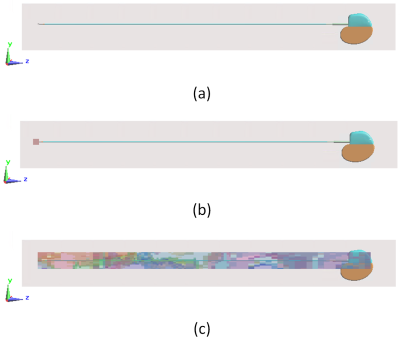 |
Implantable Lead MRI RF Heating in-vivo Transfer Function Modeling to Determine Suitable Test Medium
Xi Lin Chen, Shi Feng, Xiyao Xin, Xin Huang, Ruoli Jiang, Shiloh Sison
This abstract presents a novel technique to determine the suitable tissue simulating medium (TSM) conductivity for MRI lead electrode RF heating transfer function (TF) determination. The proposed method utilizes validated numerical lead model in conjunction with tissue models extracted along lead trajectories in anatomical models to produce in-vivo transfer function models. When combined with in-vivo incident electric fields, the power deposition or temperature rise predicted by the in-vitro and in-vivo TFs can be compared to assess the suitability and conservativeness of the selected TSM conductivity.
|
|
1470.
 |
Comparison of RF Induced Device Heating at 0.35T and 1.5T
Jessica Martinez, Kévin Moulin, Yu Gao, Peng Hu, Daniel Ennis
RF induced heating is a safety concern for patients with implanted electronic devices (IEDs). At lower field strengths (0.35T) heating is expected to be lower than at higher field strengths (1.5T). However, little experimental data has been acquired at field strengths below 1.5T. The purpose of this work is to compare the effects of field strength on RF induced heating by applying the same RF power in a metallic rod at 0.35T and 1.5T. We found that heating was substantially lower at 0.35T than 1.5T, which may be substantially beneficial for patients with IEDs.
|
|
1471.
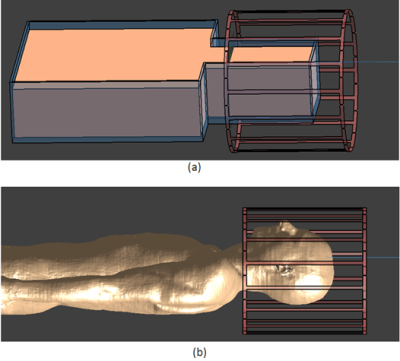 |
Resonant heating study of a partially immersed implant in ASTM phantom and Human Model
Bhumi Bhusal, Tanvir Baig, Pallab Bhattacharyya, Stephen Jones, Michael Martens
The RF heating of partially immersed implants in homogenous phantoms is reported to be highest for conductors at the resonant length. When addressing RF safety concerns, it is important to understand if these results apply to the heterogeneous structure within the human head. In this study, numerical simulations of RF heating of a partially immersed wire in an ASTM phantom are compared to an IT’IS virtual human model (Duke) for a head-only RF transmit coil in a 3 T MRI. We find that the resonant lengths are the same in both cases but the peak SAR changes slightly.
|
|
1472.
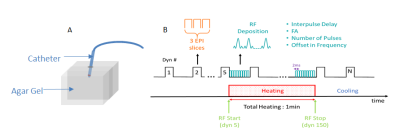 |
Evaluation of RF-related heating of an MR-compatible catheter using MR-Thermometry
Marylčne DELCEY, Pierre BOUR, Valery OZENNE, Bruno QUESSON
This study presents a fast MR-thermometry sequence interleaved with a tunable SAR deposition module to simulate energy deposition of any clinically relevant MR-acquisition sequence. Validation of the method was performed on a 1.5T scanner using an MR-compatible catheter inserted into an agar-agar gel. Maximal temperature increase measured during equivalent SAR of a cardiac cine sequence was 41.8°C for a 90° flip angle. This sequence may help quantifying the maximal acceptable SAR for any patient wearing implanted device and/or for volumetric imaging of local heating in multi-transmit technology at high field.
|
|
1473.
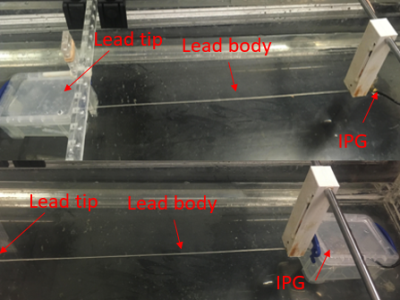 |
MRI RF Safety of Active Implantable Medical Devices (AIMDs): Experimental Study of the Effect of Conductivity of Tissue Simulating Media
Jingshen Liu, Krishna Kurpad, Paul Stadnik, Jeffrey VonArx, Larry Stotts, Wolfgang Kainz, Ji Chen
Experimental study of the effect of conductivity of tissue simulating media is performed for MRI RF safety of active implantable medical devices. The influence of medium surrounding the implantable lead tip, and the influence of medium surrounding implantable pulse generator are analyzed.
|
|
1474.
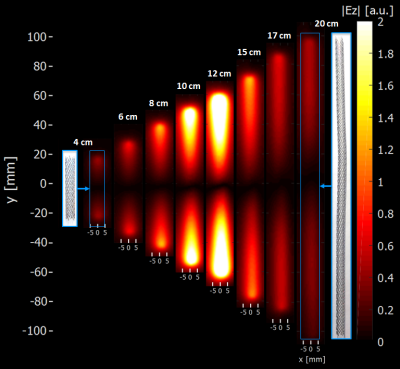 |
Electro-Optic E-field Mapping of Medical Implants with High Spatial Resolution: Resonant Excitation of Metallic Stents
Simon Reiss, Thomas Lottner, Ali Özen, Michael Bock, Andreas Bitzer
Electrically conducting implants with small and complex geometrical structures such as stents require electric field measurements with high spatial resolution to assess local MRI safety. So far, E-fields have been measured with dipole antennae that are limited in spatial resolution to several millimeters. In this study, we present an optical setup for 2D spatially resolved E-field measurements of medical implants with high spatial resolution. Resonant excitation of metallic NiTi stents with varying lengths is assessed and the sub-millimeter spatial resolution of the setup is demonstrated.
|
|
1475.
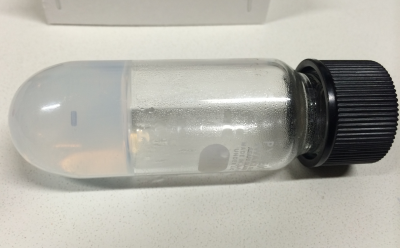 |
Development and evaluation of a single-phase alloy with magnetic susceptibility equivalent to that of mammalian tissue for coil embolization of a cerebral aneurysm
Ryusuke Nakai, Takashi Azuma, Mitsuaki Toda, Tomonobu Kodata, Hiroo Iwata
Relatively less invasive MRI has recently been increasingly used for examination after coil embolization of a cerebral aneurysm, but there is a risk of misdiagnosis due to magnetic susceptibility artifacts. In this study, we developed a device composed of a highly biocompatible alloy with magnetic susceptibility equivalent to that of mammalian tissue, and evaluated it using both an in vitro model and rabbits. We found that this alloy markedly reduced magnetic susceptibility artifacts and can be used as a device in the body. We are planning to develop various implantable medical devices using this alloy.
|
|

























